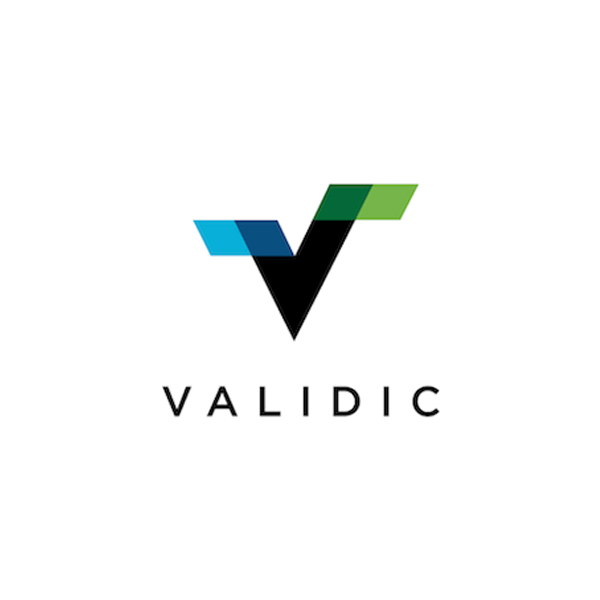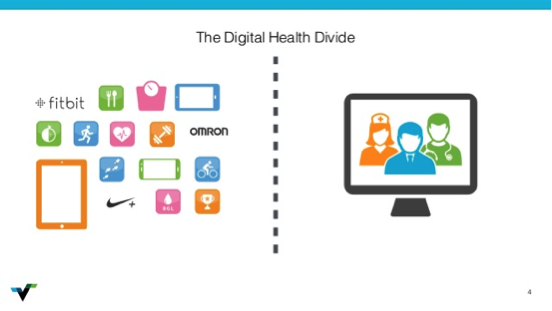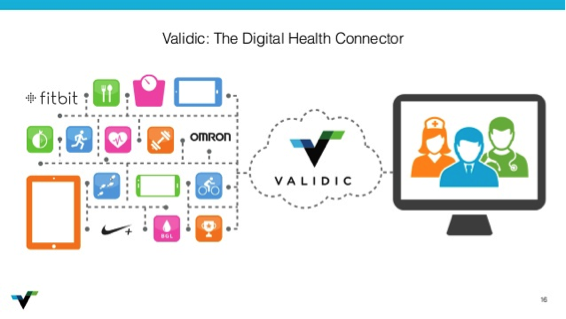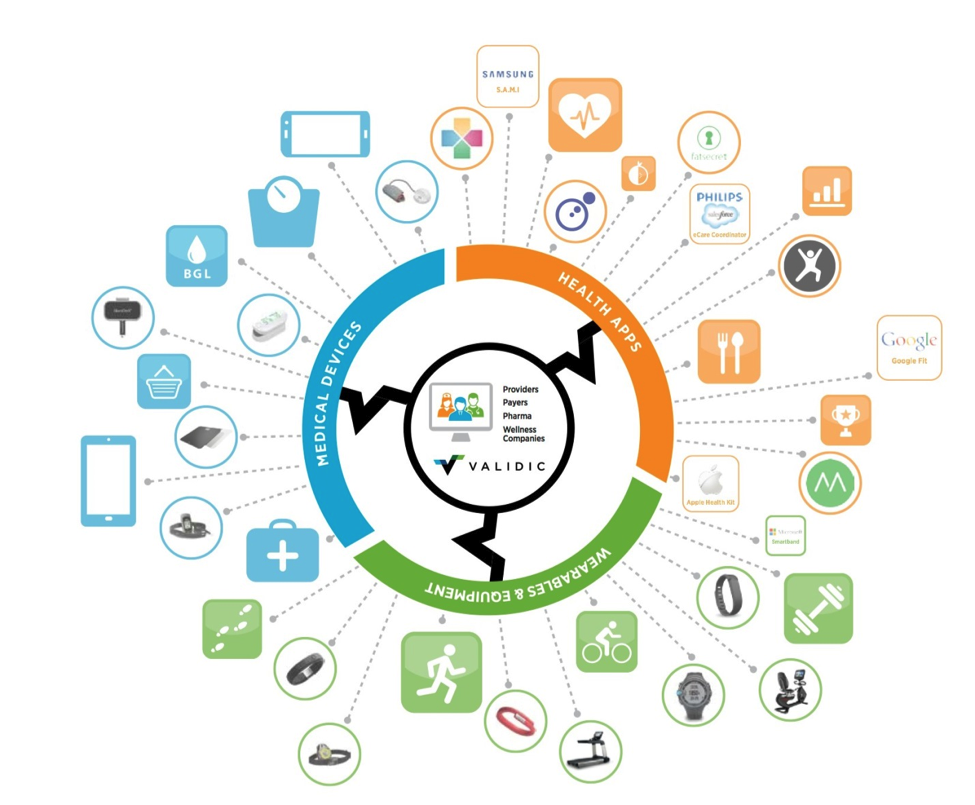Validic Bridges the Healthcare Mobile Data Interoperability Gap
Video: Co-founder and CTO Drew Schiller at 2014 mHealth Summit
“An 11-year-old girl from Cincinnati with Crohn’s Disease named Sara was waking almost hourly with severe gastrointestinal pain,” described Drew Schiller, Co-Founder and Chief Technology Officer at Validic. Schiller was presenting at the December 2014 mHealth Summit, where more than 3,000 healthcare professionals gathered to discuss opportunities for advancing the use of mobile health technologies in healthcare settings.
To learn more about the condition, Sara’s physician at Cincinnati Children’s Hospital asked Sara to use an app that would track every time she got up to use the bathroom in the middle of the night. After the first month, the physician reviewed the data and noticed a seven-day period with no incidents. An examination of Sara’s health records revealed that a different physician had prescribed a seven-day course of antibiotics for an unrelated infection. This insight led to a brand new investigational study to see if a non-digestible antibiotic can be used to treat the symptoms of Crohn’s Disease.
“This could alter treatment and improve lives for millions of Saras with Crohn’s disease around the world,” Schiller said.
The breakthrough came about because the data collected by the young girl was made available to a physician who was involved with the case. Essentially, data captured outside of the physician’s office was able to work with data in the health record to provide a clearer picture of the patient’s overall health and routine. A better outcome for the girl was achieved, and a new study affecting millions was launched. This is the true impact of mobile health data.
Yet significant work remains to be done to seize the potential of mobile health data. Too often, patient-collected data fails to reach clinicians where it could be put to good use. Pew Research found that only one out of tenpatients who gather personal health data share it with their physician.
“Do we have a sharing problem?” asked Schiller. “No, we have an access problem. Physicians and other healthcare professionals simply do not have a systematic way to access patient-recorded data.”
The problem can be described as a “Digital Health Divide.” Digital health apps, wearables and in-home medical devices are separated from traditional healthcare providers including physicians, nurses and care providers.
“For physicians to gain access to the data to make more informed decisions and new medical breakthroughs, we must close this gap,” he said.
SJF Ventures portfolio company Validic is addressing this challenge by connecting to digital health apps and devices in order to deliver actionable data into the healthcare system through one simple API (Application Programming Interface) connection. Validic can connect directly with a manufacturer’s API. Or, if the device does not have an API, the data can be captured by building directly to the Validic platform or through an SDK (Software Development Kit) connection, utilizing Validic’s VitalUp application.
Validic’s solution has already been deployed by over 70 healthcare IT vendors, health systems, pharmaceutical companies and corporate wellness providers and has a potential reach of more than 160 million covered lives.
As one example, Sutter Health, a 30-hospital system in California with 12 million patients, is using Validic in its innovations group at the Palo Alto Medical Foundation (PAMF). The health system is developing a new preventive model of care centered around a team of physicians who monitor patients remotely. The goal is to identify changes in conditions that indicate the need for examination at a Sutter facility before hospital re-admission is necessary.
One of the first projects PAMF developed using Validic was managing the data flow from activity trackers and blood pressure cuffs for patients at risk for hypertension. During the rollout period, PAMF discovered that two of the monitoring devices were not clinically acceptable. This complication had the potential to derail the project since new vendors would need to be identified and integrations built. Because Validic provides a one-to-many connection, PAMF simply swapped out devices without the need for additional development time. Validic enables customers like PAMF to “future proof” against device and app obsolescence or unsuitability in a way that de-risks important projects like this one. In this way, Validic is really helping to move the remote patient monitoring and preventative care model forward.
With new mobile health data sources entering the market every day, the need to provide interoperability is absolutely critical. “Using a digital health app or device isn’t enough,” Schiller said. “The data must be accessible by healthcare professionals to make a difference. We at Validic are working every day to solve this accessibility challenge.”


